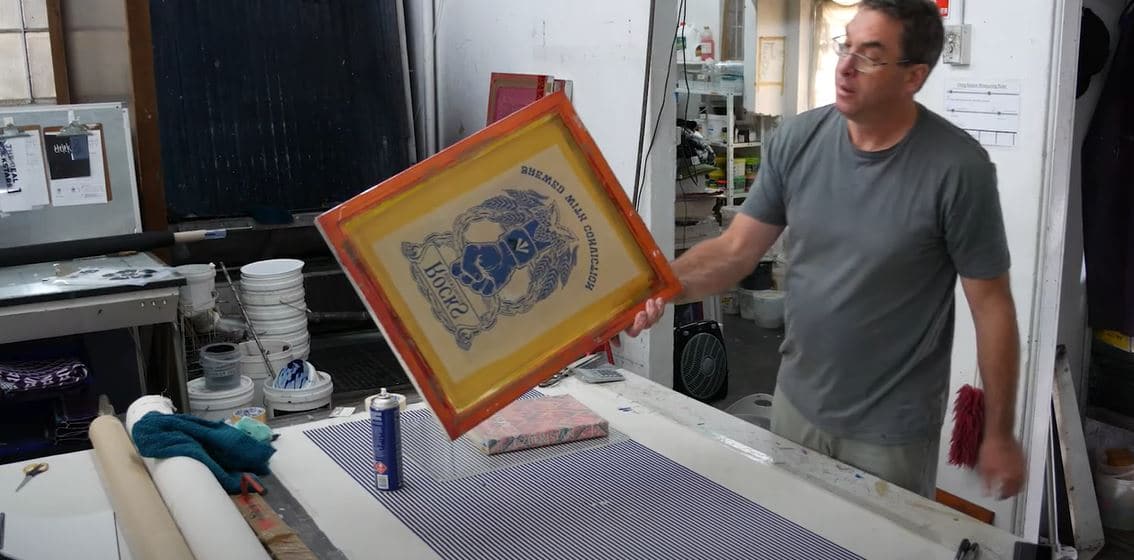ChatGPT said: 10:9 Design near me: how to find the best screen printing services locally
The Necessary Overview to Recognizing Screen Printing and Its Versatile Makes use of
Screen printing has a rich history that goes back to old times, progressing into a sophisticated strategy used throughout different industries today. This overview discovers the details of the screen printing process, detailing its applications in marketing, home, and style décor - 10:9 Design contact. Understanding these basics can open up creative capacity for both business and artistic projects. The adhering to sections will certainly reveal necessary pointers and methods to improve one's screen printing undertakings
The History of Screen Printing
Screen printing has origins that trace back centuries, its evolution reflects the technological and artistic improvements of different cultures. Originating in ancient China, the strategy was at first used for decorating textiles and later spread to Japan, where it came to be integral to Ukiyo-e woodblock printing. The technique changed to Europe in the 18th century, where it gained appeal amongst craftsmens and business printers. The invention of photo solution in the 20th century revolutionized screen printing, permitting more detailed styles and higher efficiency. Artists like Andy Warhol even more pushed its popularity, making use of the medium to develop famous jobs that blended commercialism and fine art. By the late 20th century, screen printing had established itself as a functional technique, employed in style, marketing, and art. Today, it continues to develop, integrating electronic modern technology and broadening its applications throughout numerous industries.
The Screen Printing Process Explained
Screen printing changes imaginative visions right into substantial designs through a collection of specific actions. A picture is developed and after that moved onto a screen, typically made of great mesh textile extended over a frame. A light-sensitive emulsion is put on the screen, which is subjected to light, setting in locations not covered by the picture. After washing out the unhardened solution, a pattern is developed.
Next, the screen is positioned over the substrate, whether it be fabric, paper, or an additional material. Ink is then pushed via the open areas of the stencil using a squeegee, depositing the design onto the substratum listed below. This process can be repeated for several colors, requiring separate screens for every color. The printed item is cured using warm to ensure the ink adheres properly, resulting in a durable, vivid style prepared for use.
Types of Screen Printing Techniques

Additionally, specialty strategies, such as discharge screen printing, remove dye from the fabric to produce softer prints, while foil screen printing applies metal foil to attain a shiny surface (10:9 Design Abilene). Each strategy offers distinctive characteristics, dealing with numerous creative needs and manufacturing ranges, inevitably increasing the opportunities within the screen printing domain
Applications of Screen Printing in Various Industries
.png)
Furthermore, the signage and advertising and marketing industries make use of screen printing for creating appealing displays and banners. This approach enables strong shades and intricate styles that record focus. In electronics, screen printing is utilized for applying conductive inks this article to circuit boards, vital for component connections. The home décor industry accepts screen printing to create distinct styles on fabrics and wall surface art. Overall, screen printing acts as a vital device wikipedia reference across varied fields, enhancing products with individualized and visually attractive graphics.
Tips for Effective Screen Printing Projects
While undertaking a screen printing task, mindful attention to detail can substantially boost the last end result. Initially, selecting high-grade products is crucial; this consists of the screen, inks, and substrates. Making use of suitable mesh matters can affect ink deposition and information resolution. Preparation is equally essential; thorough cleaning of displays and proper direct exposure times guarantee crisp prints.
Next off, exact registration is vital for multi-color prints. Using placement devices can help achieve exact layering. Additionally, testing prints on scrap materials prior to production helps determine prospective concerns without throwing away resources.

Often Asked Questions
What Materials Are Finest for Screen Printing on Material?
Cotton and polyester blends are suitable for screen printing on material as a result of their sturdiness and ink absorption. Furthermore, specialty textiles like silk or canvas can generate special textures and finishes, improving the general style quality.
Just how Do I Clean and Maintain Screen Printing Equipment?
To maintain and clean screen printing equipment, one must frequently clean displays with proper solvents, inspect mops for wear, oil relocating components, and store all items in a dry, dust-free atmosphere to lengthen their life-span.
What Are the Environmental Effects of Screen Printing?
Screen printing can have substantial ecological impacts, including chemical waste from inks and solvents, water use during cleansing procedures, and energy usage. Sustainable practices and environment-friendly materials are vital for minimizing these negative effects.
Can Screen Printing Be Done in your home Efficiently?
Screen printing can be successfully done my site at home with the appropriate materials and methods. Enthusiasts can create high quality prints, though success relies on their ability degree, devices, and understanding of the procedure entailed.
What Are the Expenses Linked With Beginning a Display Printing Organization?

Beginning a screen printing service includes expenses for tools, products, and work space. First expenses commonly range from a few hundred to numerous thousand dollars, relying on the range, high quality of machinery, and wanted production capability.
Screen printing has an abundant history that dates back to ancient times, developing into an innovative strategy used across various sectors today. Another technique, rotary screen printing, employs round displays, promoting continual printing on material rolls, consequently enhancing efficiency for massive productions. Additionally, specialized techniques, such as discharge screen printing, remove color from the fabric to develop softer prints, while aluminum foil screen printing uses metal foil to accomplish a shiny coating. In the fashion sector, screen printing is extensively utilized to produce vivid designs on apparel, enabling brand names to display their one-of-a-kind styles. Cotton and polyester blends are excellent for screen printing on material due to their durability and ink absorption.